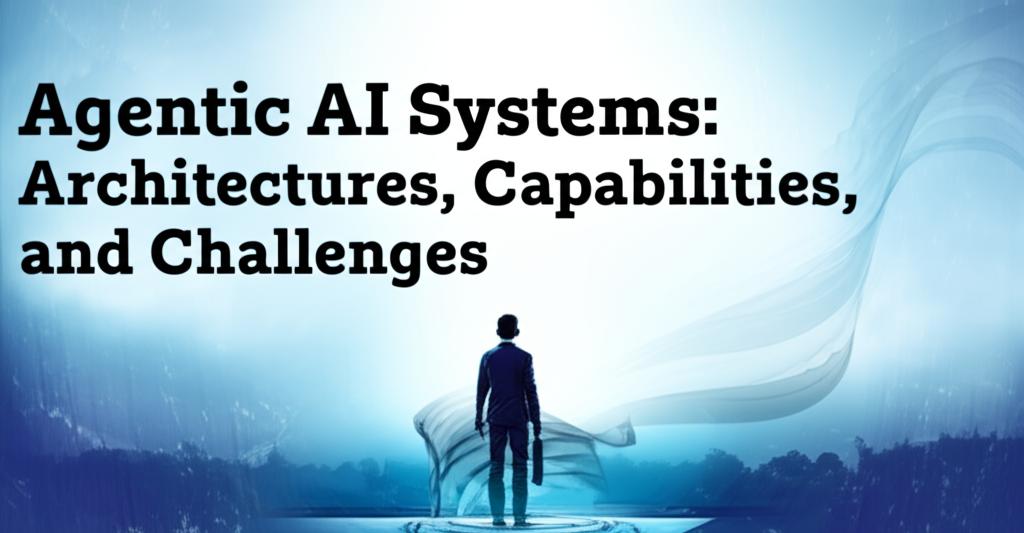Here is a knowledge-sharing article on Agentic AI Systems based on recent information:
Agentic Artificial Intelligence (AI) represents a significant shift in the capabilities and applications of AI. Unlike earlier AI systems that often required direct commands or followed strict rules, agentic AI systems are designed with autonomy, allowing them to pursue complex goals with limited human supervision. They can perceive their environment, reason through multi-step problems, make decisions, take actions, and learn from the outcomes in real-time.
These systems often leverage a combination of technologies, including large language models (LLMs) for natural language understanding and generation, machine learning (ML) for pattern recognition and adaptation, reinforcement learning for improving strategies based on feedback, and knowledge representation to understand context. This integration allows agentic AI to move beyond reactive responses (like generative AI creating content based on a prompt) towards proactive, goal-oriented behavior. Essentially, while generative AI focuses on creating, agentic AI focuses on doing.
Architectures Driving Agentic SystemsThe structure of agentic AI systems enables their autonomous capabilities. Common architectural patterns include:
- Layered Architecture: Many systems operate across logical layers such as Tool, Reasoning, and Action. The Tool layer interacts with data sources (APIs, databases, sensors), the Reasoning layer processes information (often using LLMs) to understand context and plan steps, and the Action layer executes the plan and orchestrates the workflow.
- Component-Based Design: Key components often include modules for Perception (data gathering), Reasoning/Decision-Making (analyzing data, weighing options, setting goals based on objectives), Action Execution (interacting with tools or environments), and Learning/Adaptation (updating knowledge and strategies based on feedback).
- Multi-Agent Systems: For complex problems, multiple specialized AI agents might collaborate. A "planner" agent might orchestrate the work of several "sub-agents," each handling a specific part of the task. Architectures can range from hierarchical (Vertical AI) where a lead agent directs others, to decentralized (Horizontal AI) where agents collaborate as peers, or Hybrid models combining both approaches.
- Cognitive Architectures: More advanced designs aim to mimic human-like cognitive processes, incorporating sophisticated modules for perception, memory, reasoning, and adaptation to handle highly complex and uncertain environments.
Frameworks like LangChain and AutoGen, along with platforms designed for AI orchestration, provide tools to build, deploy, and manage these complex architectures.
Expanding Capabilities and ApplicationsAgentic AI systems unlock a wide range of capabilities that were previously difficult to automate:
- Autonomous Workflow Management: Automating complex business processes end-to-end, such as optimizing supply chain logistics in real-time based on traffic and demand, managing inventory, or handling multi-step customer service resolutions.
- Enhanced Decision Support: Analyzing vast datasets to identify trends, predict outcomes, and provide actionable insights for human decision-makers in fields like finance (e.g., automated trading, risk management) or city planning.
- Hyperautomation: Taking automation beyond simple repetitive tasks to handle more complex scenarios requiring reasoning, adaptability, and interaction with multiple systems.
- Personalized Experiences: Delivering highly tailored customer service by understanding intent and context, anticipating needs, and autonomously resolving issues 24/7. In healthcare, this could mean managing personalized care plans or scheduling.
- Complex Problem Solving: Breaking down large problems into manageable sub-tasks and coordinating actions to find solutions, mimicking collaborative human efforts.
- Integration with the Real World: Connecting to external tools, APIs, and even robotic systems allows agentic AI to act beyond the digital realm, for instance, in advanced manufacturing or autonomous vehicles performing real-time navigation.
Despite their potential, the development and deployment of agentic AI systems face significant hurdles:
- Data Dependency: Success relies heavily on high-quality, diverse, and relevant data. Poor data can lead to biased or ineffective decision-making. Ensuring access to real-time, accurate data across various sources is critical.
- Reliability and Predictability: The autonomous and adaptive nature of these systems can sometimes lead to unpredictable behavior or errors. Ensuring reliability, especially in critical applications, is a major challenge.
- Security and Privacy: Granting agents access to multiple systems and potentially sensitive data increases security risks, including data leaks or vulnerabilities like prompt injection attacks. Robust security protocols, access controls, and monitoring are essential.
- Explainability and Transparency: Understanding why an agent made a particular decision can be difficult due to the complexity of the models ("black box" problem), hindering auditing and trust.
- Accountability and Responsibility: Determining liability when an autonomous system causes harm is complex, given the multiple actors involved (developers, deployers, users). Clear accountability frameworks are needed.
- Ethical Considerations: Ensuring fairness, preventing bias amplification, maintaining human control where necessary, and aligning agent actions with human values are ongoing ethical challenges.
- Implementation Costs and Talent: Building, deploying, and managing these systems requires significant investment in infrastructure (like GPUs), data management, and specialized AI talent.
Agentic AI is rapidly evolving, with 2025 widely seen as a pivotal year for its adoption. Several trends are converging: advances in LLM reasoning and planning, improved memory capabilities for agents, effective reinforcement learning techniques, and better integration with external tools. We are witnessing a shift from focusing solely on foundational models to harnessing them within agentic frameworks. The rise of multi-agent systems and AI "orchestrators" managing teams of specialized agents is expected. Integrating smaller, specialized language models (SLMs) alongside larger LLMs may also become common. As capabilities grow, establishing strong governance, security, and ethical frameworks will be crucial for responsible and effective deployment.
In conclusion, Agentic AI systems represent the next frontier in artificial intelligence, moving towards more autonomous, adaptable, and action-oriented capabilities. While challenges remain, their potential to transform industries by automating complex tasks, enhancing decision-making, and driving new efficiencies is immense. Navigating the technical, ethical, and practical considerations will be key to unlocking this potential responsibly.

